New Orleans Travel Tips
A small city with a big soul, there is nothing else in the world quite like the Crescent City. Combine all of life’s best ingredients — mouthwatering cuisine, a legendary musical legacy, a colorful artistic community and an infectious happiness — let it breathe for 300 years and you have New Orleans.

A melting pot of epic proportions, French, Spanish, African and American influence form the foundations that allow New Orleans to thrive. Competing cultures came together to form the harmonious melody known as the “joie de vivre” (joy of life). When dancing in the street, the only question that matters is how to join. New Orleans wears its contagious happiness on its sleeve; parades and festivals from Mardi Gras in February to October’s Voodoo Fest; thriving open-air artists communities; musicians young and old performing in ageless clubs and bustling street corners.
Whether setting out on a stroll through the finely manicured Garden District, experiencing the energy of Bourbon Street, dancing to live jazz on Frenchman Street or searching for the best po-boy or jambalaya, New Orleans has something for everyone.
New Orleans Fast Facts

- Founded: 1718
- Population: 391,495
- Nicknames: NOLA, the Big Easy, the Crescent City
- Demographics: 59.8% Black, 30.5% White, 4.9% Hispanic, 3.0% Asian, 1.3% Mixed, 0.5% Other
- Religion: 31% Catholic, 21% Protestant, 3% Other Christian, 2% Other, 43% None
- Airport: Louis Armstrong New Orleans International Airport (MSY)
- Annual Visitors: 10.45 million (2016)
Getting Around
Downtown New Orleans is compact and the flat landscape makes the city easy to get around. Much of New Orleans is laid out in a grid pattern as the Mississippi River bends like a horseshoe around the many neighborhoods. The flat landscape and close neighborhoods make New Orleans easily navigable both on foot and by bike.
Public transit is readily available via the New Orleans Regional Transport Authority operating dozens of bus routes and four historic streetcar lines — the oldest continually operating streetcar in the world. Standard one-way fares for both streetcars and buses are $1.25. A senior citizen discount (65 and older) is available with valid ID for $0.40 per ride.
The Port of New Orleans — easily accessible from downtown, the French Quarter and the Garden District — is a popular cruise destination for local and international cruises. They include local New Orleans tours, one-way and round-trip Mississippi River Cruises and ocean liner cruises to Mexico and the Caribbean.
Weather in New Orleans

Located at the mouth of the Mississippi River and near the Gulf of Mexico, New Orleans has warm, comfortable winters and hot, humid summers. January is the coolest month with an average high of 62°F and low of 47°F. July and August are the hottest months with average highs of 91°F and lows of 76°F, and June is the wettest month averaging nearly 7 inches of rain. Humidity hovers between 65-80% with an annual average of 73%. May is the least humid month while January is the most humid.
The winters are mild but can provide a welcome escape from cooler parts of the country. Peak travel season begins with Mardi Gras in February and lasts through May. During this time of the year, events and festivals are plentiful. Temperatures pick up from June through September, when warm temperatures combine with higher humidity. Hurricane season spans summer into early fall until November.
New Orleans Music & Cuisine
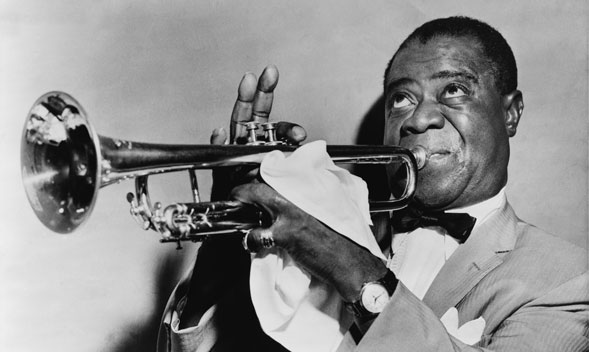
Universally considered the birthplace of jazz, music plays from the soul of New Orleans. The Crescent City’s multicultural roots created a breeding ground that would change the course of music around the world. NPR perfectly described New Orleans saying, “there’s a piece of music history around every corner.”
After becoming the 18th state, Louisiana retained the French code allowing slaves to gather on Sundays. Under Congo Square’s oak canopy, slaves would gather with their native instruments to drum and dance; the foundations for jazz were created. At the turn of the 20th century, Buddy Bolden could be heard on stage entering “the trance” — a time when nothing else mattered but the music — as wild scales and improvisations filled the air. Bolden, who was his band’s front man until suffering a mental breakdown in 1907, is widely considered the first person to play jazz.
Growing up listening to the lullabies of the Buddy Bolden Band, Jelly Roll Morton and Louis Armstrong were pioneers in America’s musical development. Representing jazz’s id and ego, Morton and Armstrong helped the musical style spread like wildfire to Chicago, New York and Los Angeles. Morton famously boasted “I am jazz,” culminating with a recording session for the Library of Congress in 1938, inspiring and uplifting new artists into the spotlight in his continually evolving band. All the while, Armstrong quietly surpassed his mentors and broadened the boundaries of the genre, playing in venues inaccessible to other African American artists at the time.
New Orleans’ contributions to music in the 20th century continued to evolve as rock and roll swept the nation. A product of the French Quarter, Fats Domino released “The Fat Man” in December 1949. It became one of the first rock and roll records and sold over 1 million copies. J&M Recording Studios, where “The Fat Man” was recorded, was named a rock and roll landmark in 2010. From 1945 to 1956, the tiny studio produced some of the developing genre’s earliest hits, including “Good Rockin Tonight” and “Tutti Frutti.”
Today, New Orleans embraces a legendary reputation in the realm of music. Blues, jazz, swing and rock and roll are alive and well, flourishing in music clubs and street performances throughout the city. Preservation Hall’s weathered stage preserves jazz in its early days; Bullet’s Sports Bar lives on the funky side, showcasing funk and brass-band music; a Canal Street staple, Chickie Wah Wah is one of the premier locations to enjoy fresh, local sounds and touring singer-songwriters.
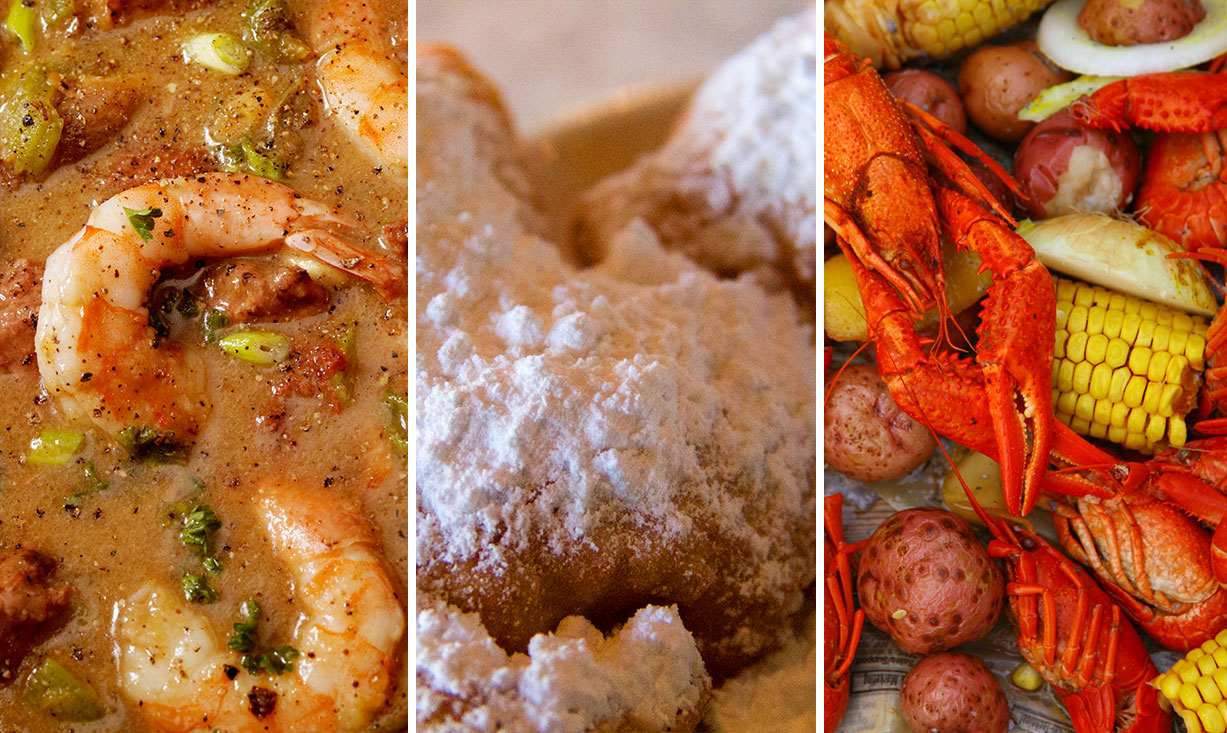
While the music will leave your feet tapping and your mind dancing, the food will leave your mouth drooling and stomach satiated. World-renowned chefs embrace a creative approach, producing a playful cuisine matching the joyous nature of New Orleans. French, Spanish, Creole and Cajun flavors combine for an eclectic mix of cooking styles that is unrivaled around the world.
Originating from the region’s bayous, Cajun food combines thick broth with French and Southern flavors to create into favorites including gumbo and boudin. Creole cuisine — most notably, Jambalaya — adds African and European flavors into mouthwatering sauces with fresh seafood. One-of-a-kind dishes such as alligator sausage and turtle soup can be found alongside the classics — po-boys, crawfish etouffee, muffulettas and beignets.
New Orleans’ best fare, both traditional and experimental, can be found at restaurants throughout the city’s many neighborhoods. Experience the classic cuisine and comfort food at hometown staples including Palace Café, Mr. B’s Commander’s Palace, Tujague’s and Napoleon House Bar & Café. Fear not, for you can experience a taste of culinary history, too; the city is home to both the country’s oldest family-run restaurant — Antoine’s — and the country’s oldest café — Café du Monde.
What is the difference between Creole and Cajun?
While both groups have made significant contributions to New Orleans’ history and cultural legacy, what are the differences between these two groups?
Cajun
In the 1600s, French colonists came to the Canadian Maritime provinces — Nova Scotia, New Brunswick and Prince Edward Island — in a region they named “Acadia.” When the Maritimes fell under British control, the Acadians refused to accept Protestantism, becoming a political and religious threat. Expelled by the British, many Acadians ultimately journeyed to the Louisiana Territory where the Catholic French would be more accepting of their culture and customs. Their descendants came to be the dominant culture in southern Louisiana, the term “Cajun” being an adaptation of “Acadian.”
Cajuns learned to make use of every part of a slaughtered animal. Boudin, Tasso and Andouille are names of traditional Cajun sausages. Cajun food is also famous for being well seasoned, sometimes misunderstood as spicy. Onion, Celery, bell pepper, garlic, paprika, thyme, sassafras, parsley and green onions are very common ingredients in Cajun kitchens.
Creole
The term “Creole” could include anyone born in New Orleans with French or Spanish colonial ancestors, specificially in New Orleans. In the 18th century, Creoles were descendants of the French and Spanish upper-class, and over the years the term grew to include native-born slaves of African and Caribbean descent. Typically, the term French Creole described someone of European ancestry, while Louisiana Creole described someone of mixed racial ancestry.
Like its people, Creole food is a blend of cultures found in New Orleans, including Italian, Spanish, Africa, German, Caribbean, Native American and Portuguese. Traditionally, Creole cuisine is thought of as more aristocratic than Cajun cuisine. There are generally more ingredients in Creole cuisine because of the easier access Creoles had to exotic ingredients and the wide mix of cultures that influenced it.
“I highly recommend this program without reservation. The staff was very knowledgeable and everything was well organized. It allowed me to experience a truly unique event which I would not have dared to undertake on my own. The headline from a New Orleans paper on Wednesday morning after Fat Tuesday could be used to concisely describe the total experience. It was ‘Good to the Last Catch.’”
— Gary from Lexington, KY —
Top Attractions in New Orleans

Laid out in 1718 and named for France’s House of Bourbon, history and culture collide with energy and passion that makes New Orleans one of the quirkiest cities in the United States. The quintessential New Orleans experience, no visit is complete without a journey to boisterous Bourbon Street. Lined with neon lights, iconic balconies, soul-filled musicians and an exuberant amount of restaurants and bars, Bourbon Street is the city’s heart and soul.

The National WWII Museum opened its doors on June 6, 2000, in honor of D-Day’s 56th anniversary. Formerly known as the D-Day Museum, Congress designated it the official National World War II Museum in 2003 and is a Smithsonian affiliate. Shining a light on the American experience, its mission is to help future generations understand the price of freedom and inspire others with the knowledge they have gained. The most-visited attraction in New Orleans and ranked one of the top five museums in the country, the National WWII Museum is located on the Mississippi River in the Central Business District.
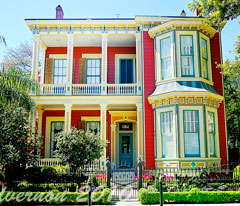
As New Orleans began to grow, many of its new citizens preferred to live beyond the boundaries of the older Creole town. Many of these wealthy new settlers purchased land formerly belonging to plantations, establishing a number of smaller towns that would later combine to form the Uptown neighborhood. The planned layout of the Garden District divided each block into two grand manors surrounded by the colorful gardens for which it is named. In pristine condition, the Garden District showcases the wealth and prosperity in the mid-19th century. The lush district is a popular filming location, is home to world-class dining and popular attractions including the 500-vault Lafayette Cemetery No. 1.
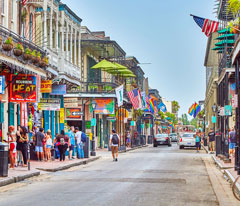
Away from the hustle and bustle of the French Quarter and the crowds of the Garden District, Frenchman Street could be considered Bourbon Street’s cool, younger cousin — wooden signs replace neon lights and street musicians perform everything from blues to reggae. Within a four-block stretch, curious chefs push the boundaries of New Orleans cuisine, art galleries and markets are open well into the night, and laid-back jazz clubs are reminiscent of the style’s early days. Dine on the experimental side while enjoying live jazz at the Three Muses or enjoy authentic soul food at The Praline Connection.

In the shadow of the white-fronted St. Louis Cathedral, Jackson Square — originally named "Place d'Armes" but renamed in honor of Andrew Jackson — sits in the heart of the French District. Surrounded by shops and restaurants housed in historic buildings, Jackson Square is home to an open-air artist colony who display their works on the outside of the intricate iron fence. Flanked by several renowned restaurants including the 24-hour Café de Monde and the Cajun favorite Tujague’s, satiate your appetite after exploring the many shops, artists stands and people watching.
Events & Festivals
New Orleans loves to celebrate its diverse and fascinating history with the way it knows best — celebrating in the streets! Look below to see when some of New Orleans’ most popular festivals take place.
“This was an informative, interesting and exciting program. The sights were beautiful and informative. The history was amazing. It was great to have free time to explore and indulge in individual requirements. It was a perfect short vacation.”
— Vicki from New York, NY —
New Orleans Neighborhoods
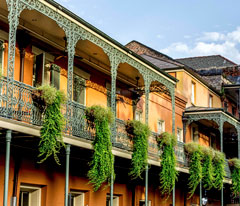
Originally known as the Vieux Carré and referred to it as the “Quarter” by locals, the French Quarter is the cultural hub of New Orleans. Built on the highest ground along the crescent of the Mississippi River, the French Quarter stands unrivaled among the United States’ unique neighborhoods. Devastated by the fires of 1788 and 1794, the enchanting architecture blends Spanish, French, Creole and American styles built throughout the mid-19th century. Cast-iron railings protect floral-lined balconies and barriers as locals and tourists alike enjoy the world-renowned music and cuisine of the French Quarter and Bourbon Street. Each February, Fat Tuesday ushers in the beginning of Mardi Gras as New Orleans’ largest festival parades through the neighborhood’s streets.

Uptown is named for its location upriver from the older Creole city. Uptown was created from former plantations and settled by immigrant communities as they came to New Orleans. Created by merging several smaller neighborhoods, Uptown was officially annexed by New Orleans in 1874. Notable for the lush Garden District — showcasing the wealth of American settlers — Uptown is also home to Audubon Zoo and Park, Lafayette Cemetery No. 1 and Tulane University.

Since 1854, the oak trees and moss canopy of City Park form one of the oldest public parks in the country. The 1,300-acre park is home to the world’s largest grove of mature oaks, several themed gardens, the Festival Grounds and a sculpture-filled playground great for families. City Park also contains an 18-hole golf course and the New Orleans Museum of Art.
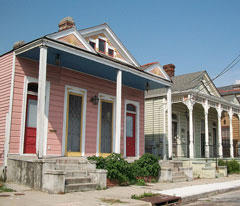
The oldest African American neighborhood in the United States (settled in 1783), Tremé has been influential in some of New Orleans’ significant social, political and cultural events of the past two centuries. Slaves who became freed men settled here, turning Tremé into a focal point of African culture at a time when slavery was still prominent throughout much of the South. Home to Congo Square and Armstrong Park, Tremé is where jazz was born and home to one of the best music scenes in the city.

Just down river the French Quarter, Marigny is a small neighborhood incorporating everything that makes New Orleans unique. An eclectic combination of Georgian, Creole, and Greek Revival houses stand side-by-side among trending cafes, jazz clubs and galleries. Frenchman Street is known for restaurants where curious chefs experiment with local cuisine and musicians of today and tomorrow can be heard making sound waves.
“Soak up the history of New Orleans and the Mississippi River as you cruise up the Mississippi to plantations and battlefields. Dine on delicious food the steamboat’s elegant dining room, meet new friends and relax on the front deck with the Mississippi River breezes while you gaze at a million stars. It doesn't get any better.”
— Rebecca from Miramar Beach, FL —
New Orleans Travel Tips
“New Orleans was our first adventure with Road Scholar. Great accommodations, wonderful Group Leader and fun and interesting field trips delighted beyond belief. Not to mention the food — amazing choices for dining and experiencing the fabulous cuisine of New Orleans. Don't miss this adventure!”
— Anne from Herndon, VA —
History of New Orleans

Hernando de Soto and his expedition are the first Europeans to discover the Mississippi River.

Jean-Baptiste Le Moyne claims the Mississippi River Valley in the name of King Louis XIV of France.
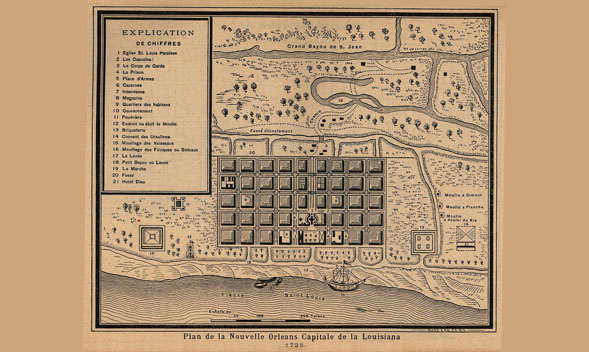
Jean-Baptiste Le Moyne founded “Nouvelle-Orléans” on the high ground above the mouth of the Mississippi River and becomes the first governor of French Louisiana.
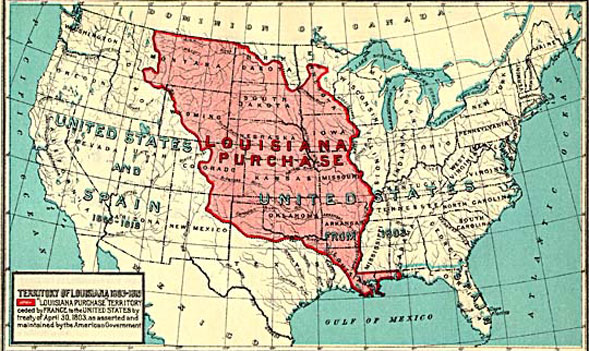
The United States purchases the Louisiana territory from Napoleon, paying $11.25 million and a cancellation of debts worth $3.75 million, for a total of $15 million, or around $250 million in 2016 dollars.
The territory contained land that forms Arkansas, Missouri, Iowa, Oklahoma, Kansas, and Nebraska; the portion of Minnesota west of the Mississippi River; a large portion of North Dakota; a large portion of South Dakota; the northeastern section of New Mexico; the northern portion of Texas; the area of Montana, Wyoming, and Colorado east of the Continental Divide; Louisiana west of the Mississippi River (plus New Orleans); and small portions of land within the present Canadian provinces of Alberta and Saskatchewan. Its non-native population was around 60,000 inhabitants, of whom half were African slaves.
Louisiana is admitted as the 18th state in the American Union on April 30, 1812.
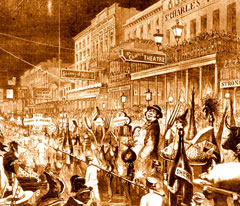
Ten years after a group of students returned from Paris, inspired by the revelry they’d observed, the first official parade took place.

Union forces occupied New Orleans during the Civil War, sparing the city much of the destruction faced by the rest of the Confederacy.

The Supreme Court ruled that Plessy v. Ferguson was constitutional, setting the precedent for legal racial segregation so long as facilities for blacks and white were considered “separate but equal.”
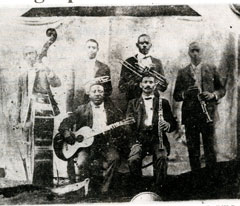
Buddy Bolden is considered to be the first “Jazz” musician, playing an improvised version of ragtime mixed with some blues.

Tennessee Williams moved to the French Quarter, where he based his 1947 play, A Streetcar Named Desire.

City business leaders officially endorsed a plan to desegregate New Orleans’ public schools, 6 years after 1954's Brown v. Board of Education overturned Plessy v. Ferguson.

Mahalia Jackson and Duke Ellington spontaneously joined the Eureka Brass Band as they performed during the Louisiana Heritage Fair. Singing alongside the parade, Jazz Fest was born.

Hurricane Katrina causes New Orleans’ levees to fail, flooding the city in up to 25 feet of water, causing economic losses estimated between $10-25 billion.
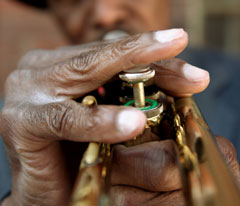
In the midst of its renaissance, New Orleans is experiencing a period of rebuilding and revitalization.
Recommended Reading
“Rising Tide” by John Barry
An American epic of science, politics, race, honor, high society and the Mississippi River, Rising Tide tells the riveting and nearly forgotten story of the greatest natural disaster this country has ever known — the Mississippi flood of 1927.
“Creole New Orleans: Race and Americanization” by Arthur Hirsch and John Logsdon
This collection of six original essays explores the peculiar ethnic composition and history of New Orleans, which the authors persuasively argue is unique among American cities.
“Why New Orleans Matters” by Tom Piazza
Follow William Allen as he journeys to Guanacaste — where tropical forests were marred by wildfires — with Costa Rican and American scientists to restore the tropical landscapeAward-winning author and longtime New Orleans resident Tom Piazza illuminates the storied culture and uncertain future of this great and neglected American Metropolis.
“Mardi Gras … As it Was” by Robert Tallant
From its origins as a French Creole celebration to a city-wide celebration harboring the soul of New Orleans, follow the grandeur and exuberance of Mardi Gras through the centuries.
“Life on the Mississippi” by Mark Twain
Mark Twain’s work remains the most vivid, boisterous and provocative account of the cultural and societal history of the Mississippi Valley, from “the golden age” of steamboating to the violence wrought by the Civil War.



